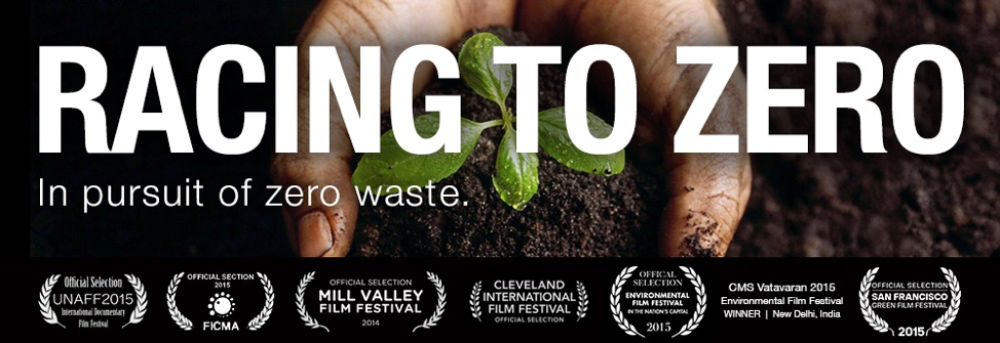Reviewed by Jack David Eller
Assistant Professor of Anthropology, University of Colorado and Author
An informative and optimistic film demonstrates the commitment of San Francisco to reduce its city waste destined for landfills to zero by aggressive programs of recycling and composting, promoting a civil culture of waste consciousness and exploiting the economic value of recycled and composted materials.
Modern industrial societies produce a lot of marvelous things, but what they produce perhaps more than anything else is waste. Waste represents not only the unused portion of our output (like leftover food) but also the unusable (like packaging) and used up (like old worn out clothing and electronics), not to mention all of the side effects of production such as mine tailings and waste water. All of this waste has to go somewhere, and, since the earth is a closed system, it all ends up on the planet with us, much of it tossed thoughtlessly into landfills.
In this informative and hopeful but almost overwhelming film, we learn that one city, San Francisco, has set a goal to have ‘zero waste,’ that is, to recycle every bit of refuse and send nothing to the landfill. With a target date of 2020, the city has already reduced landfill by 70%. Our guide through the film is Robert Haley, city ‘zero waste manager,’ who explains that all household waste, and even construction material, is due for and capable of recycling.
From a demolition site, generating tons of broken concrete and metal, Haley takes us to the capitol building, pointing out how the substances there can be recycled. The project entails a virtual army, beginning with the trash men servicing the city’s buildings. The city’s plan features three streams or processes—recycling, composting, and trash (landfill), but success depends on the participation of everyone. First we enter a recycling facility (for more on recycling centers and the idea of ‘streaming,’ see Pawel Wojtasik, Toby Lee, and Ernst Karel’s Single Stream, reviewed elsewhere in ARD). There, people and machines separate the various materials and pull out the wrong stuff. Metal, paper, plastic, and glass are all destined for recycling. Another recycling center shows people bringing and selling metal and glass (for recycling is a business that must make economic sense). Glass is a particularly good candidate for reuse, as it can be recycled over and over again.
The city has also has three devices at its disposal (pardon the pun) to encourage conscious disposal of waste-, namely, financial incentives, laws, and culture. To enforce the latter two, auditors keep the public informed about their waste practices but literally inspecting trash bins and writing tickets and warnings. As for culture, on Earth Day volunteers called ‘wastebusters’ handle trash and teach people which stream their items belong in.
Another issue is composting, both household and restaurant food trash. The material is sent to a composting collection site and then to composting centers outside the city. The compost eventually goes to farms and vineyards, where growers depend on the compost, which renews the soil and holds down food prices.
At the opposite end of the natural-material spectrum is ‘e-waste’ or the garbage produced from throwing away electronic devices. E-waste is a global crisis, since items are shipped all around the world like China and Africa, where they are often handled in irresponsible ways that release noxious chemicals into the environment. (For more, see Isaac Brown’s Terra Blight, reviewed elsewhere in ARD). At a service that collects and recycles electronics, it is explained happily that some items can be repaired, and the rest is disassembled for reuse or recycling. Another problematic product of modernity is plastic, especially because there are hundreds of kinds of plastics that cannot be recycled together. In a plastics recycling facility, items are melted down, extruded in strands like spaghetti, and then chopped into pellets, such as would come out of a plastic factory.
The film also mentions a number of other kinds of items that we often disregard when it comes to recycling. One is textiles, and to illustrate the issue the film visits a Goodwill headquarters, where donations are sorted. Much of what they receive is clothing, and resellable clothes are separated from unsellable ones, the latter either shipped overseas or recycled into thread and eventually another garment. Then there is the final 20% that is still being landfilled, including plastic bags, styrofoam, toxic substances. For example, dangerous chemicals are used, and thrown away, by nail salons and dry cleaners, and San Francisco has specialists who deal with these sites. Finally, there are household chemicals, medicines, and biohazardous materials that are generated in hospitals and veterinary clinics. San Francisco aims to capture all of this too and keep it out of landfills (and therefore the soil and water), if only by incineration.
Finally, one way to produce less waste in the first place is conservation, including energy conservation and renewable energy. As we see children learning about and practicing sustainable lifestyles, and San Francisco Airport’s recycled-material art displays, the film gives us these words to think about: “To actually put more back into the world than we are taking—ultimately that’s what zero waste is all about.” Racing to Zero shows that it takes a tremendous effort of manpower, technology, and political will but that reducing the waste output of modern society is possible…maybe even all the way down to zero.
